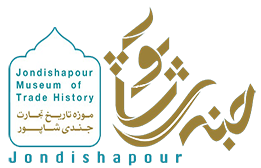Types of ornaments :
Famous types of ornaments during the Achaemenides era are as follows:
- Bracelets
- Necklaces
- Earrings
1- Bracelets:
Bracelets that were common during the rule of the Achaemenides were made in a way that there was the head of an animal at one end of the bracelet. The image carved on these bracelets was the image of two lions eating two rams. Another common image was two birds of prey inlaid with gems. The bracelet was so popular during the Achaemenides era. One of the new features of bracelets during this period was the extensive use of ornate jewelries. The best example of these artefacts are those of the Oxus Treasure that have been influenced by the Egyptian art and they have been in the form of the heads and busts of two griffins.
2-Necklaces:
The most invaluable example of necklaces of the Achaemenides era is the one found in the coffins buried in Susa that belong to the Oxus Treasure. This necklace is made of gold inlaid with gems and an image of a bird of prey and Ahura Mazda has been placed on it. There is another necklace of the Achaemenides era that is preserved in the National Museum of Iran with engraved lions hanging on a string of gold beads.
3-Earrings:
The most noticeable feature of earrings of the Achaemenides era is the circular loop. The loop does not form a complete circle. There is an opening in the earrings with clamps to the left of the earrings and a connected post to fix them on the ears. These earrings have been seen on the ears of people wearing Parthian and Median clothes. These earrings composed one part of the gifts

